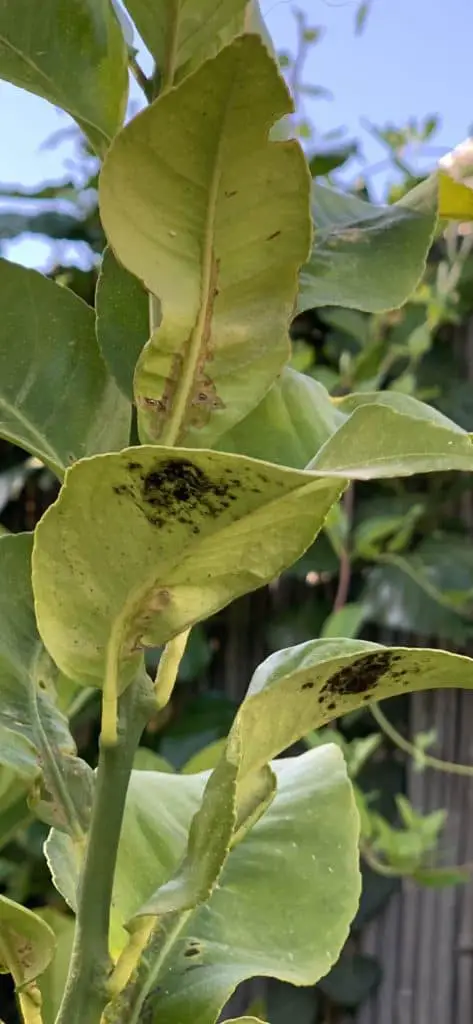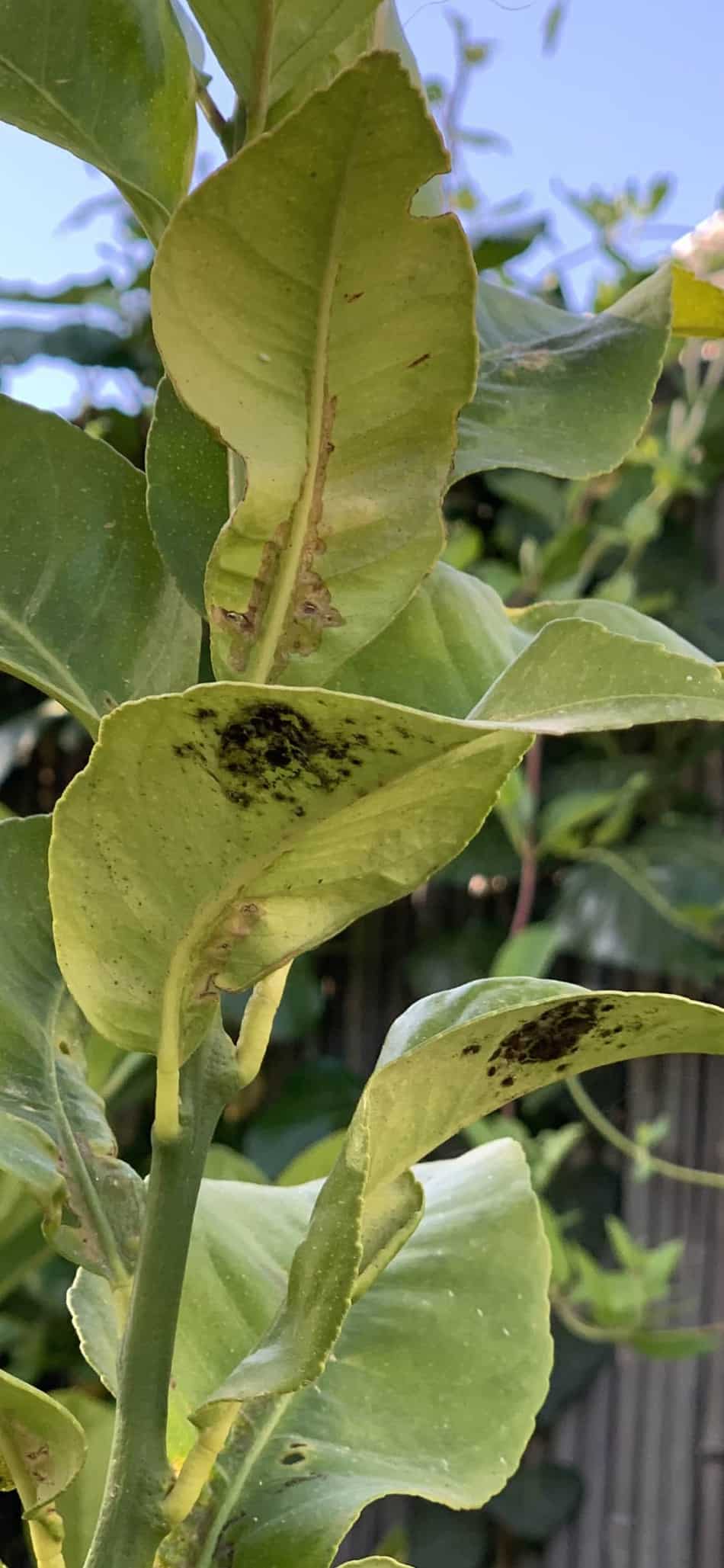If you own a citrus tree in your orchard, it is likely that you have at least once found unsightly black traces on the leaves. These black spots are caused by a fungus called sooty mold, also known as black mold. As its name suggests, the leaves are covered with a dark soot that can be easily scraped off.
Is sooty mold dangerous?
Generally, it is harmless to humans. Sooty mold is unpleasant to look at but luckily it is a harmless fungus disease that grows on the branches, leaves, and also the fruit of most fruit trees. A fruit affected by sooty mold doesn’t look very appetizing, however, it’s edible. Simply remove the mold with warm soapy water. The fungi are non-parasitic and non-pathogenic to plants. However, although harmless in general, a massive presence of this mold on the leaves could interfere with the tree’s growth and its ability to benefit from solar energy (photosynthesis).
Often this fungus occurs when trees are in the shade or they have an excess of foliage. If not treated, the lack of sun will prevent the tree from bearing fruit.

What causes sooty mold on trees?
This fungus is the result of the infestation of sap-sucking insects such as aphids and whiteflies. As they feed on plant sap, these soft-bodied insects secrete a sugary, sticky liquid called honeydew. This is, in fact, their sticky residue, which attracts fungal spores that settle on the honeydew and germinate. It is important to identify the responsible pests for the infestation and kill them as soon as you notice them.
How to get rid of sooty mold naturally?
As I said, the sooner we identify the culprit of the spreading of the disease, the better for the tree. Here is what needs to be done:
- Look out for ants. Ants and aphids coexist in a symbiotic relationship. That is they benefit from each other. The ants protect the aphids from predators such as ladybugs, and aphids produce honeydew, of which ants are greedy. The ants breed colonies of aphids in order to literally milk them. This is the reason you should look out for ants. You want to prevent the ants from climbing on to the tree, exposing the aphids to their natural predators.
- Prune the lower branches of your tree and apply a sticky paper around the trunk.
- If the problem is mild, remove the leaves affected by black mold. Do not dispose of these leaves in the compost bin. Burn them if possible. As an alternative, you can wipe the leaves with a solution of soapy water.
- Spray the entire tree with an organic fungicide.
Here you can find four recipes for a natural homemade fungicide that you can prepare yourself. All you need is a new spray bottle that will be used for that purpose.
Cider Vinegar Fungicide: Mix 2 tbs of apple cider vinegar with 2 tsp of Castile soap and 2 cups of water. Shake well and spray on the leaves.
Tea Tree Oil Fungicide:Mix 1 tbsp of tea tree oil with 2 cups of water
Essential Citrus Oil Fungicide:Mix 20 drops of citrus oil with 1 tsp of Castile soap and 2 cups of water
Hydrogen Peroxide Fungicide:Mix 2 tsp of Hydrogen Peroxide with 3 cups of water.
How to treat a plant that is affected by sooty mold
First of all, water the tree at its base. Before you spray the entire tree, check the plant’s sensitivity. Try the spray only on a small portion of the plant and check the next day to see if it had any effect on the leaves. Some plants may be sensitive to the active ingredients of the fungicide and develop some yellowing. If you see that it had no negative results on the plant, go ahead and spray liberally all the foliage you can reach.The fungicide treatment should be carried out in the late afternoon. This will allow the active ingredients present in the solution to act for a few hours without exposure to heat and sunlight.Rinse the tree thoroughly in the early hours of the next morning.You can repeat this treatment during the summer months in case of need.
CAUTION: When dealing with fungicides, even if they are organic always wear protective clothing and gear. To prevent spreading the disease, always sterilize your tools. Keep the fungicides away from the reach of children and pets!
Does sooty mold spread?
Technically yes, however, not directly. As explained before, sooty mold grows in the presence of honeydew. This means that wherever honeydew lands, sooty mold can germinate and grow. It could be either on the leaves, twigs, fruit or on other plants. There are two types of sooty molds: One that grows on leaves and fruits and the other one that grows on more permanent surfaces such as objects, fences, garden furniture, and even stones.
Some of the links above are affiliate links, meaning at no additional cost to you, I will earn a commission if you click through and make a purchase.

